|
|
|
2. Before and After the Edict of Tolerance
|
|
The reconquest of Buda
 (1686), resulted in a thaw for the Roman Catholic Church only. Leopold I, Emperor of Austria and King of Hungary, elevated the Jesuits into the position of universal pastors in the capital city, and strengthened their foundations. Leopold I’s Charter, issued in 1703, meant even graver disadvantages for the Protestants. It was set forth in this Charter that only followers of the Roman Catholic faith could be registered as citizens, in other words as permanent citizens in the city. It was set forth in the charter that "those, who are aliens to the real, true Roman Catholic faith, may not be permitted and tolerated (in town) under any pretence." (1686), resulted in a thaw for the Roman Catholic Church only. Leopold I, Emperor of Austria and King of Hungary, elevated the Jesuits into the position of universal pastors in the capital city, and strengthened their foundations. Leopold I’s Charter, issued in 1703, meant even graver disadvantages for the Protestants. It was set forth in this Charter that only followers of the Roman Catholic faith could be registered as citizens, in other words as permanent citizens in the city. It was set forth in the charter that "those, who are aliens to the real, true Roman Catholic faith, may not be permitted and tolerated (in town) under any pretence."
Persons belonging to the Protestant faith were only tolerated in the capital city as passers-by under the reign of four successive Hapsburg monarchs (Leopold I, Joseph I, Charles III and Mary-Theresa)! Protestant members of the military forces stationed in the city had to be exempted from this rule, however they were only allowed to attend the services held by the Lutheran minister of the brigade stationed in Pest. Some Lutherans gathered for Sunday prayers in private houses. Even the dead of the Lutherans of the Augustan Confession and the Helvetian Faith could not have their graves in the cemeteries: they had to be buried (with the exception of military personnel) without any ceremony outside the city.
There was a Lutheran church in Cinkota, which was in the closest vicinity of Pest-Buda (3). A landed baron, named Osztroluczky, invited and settled Slovakians from the northern part of Hungary in this community. It was here, in the community church originally built in the days of the mediaeval period, where military personnel commissioned here and accompanied by some zealous Lutheran believers from Pest, who desired the Word pronounced by ministers of the Lutheran Church, could attend services.
According to contemporary sources Pest was a "poor little town" in the 18th century. (4). In the days of Mary-Theresa the number of its inhabitants was 13,000, which grew to 26,000 by the end of the 18th century. At the beginning of the 19th century 30,000 people lived on the Pest side of the river Danube, while this number was 24,000 on the Buda side. The Turkish mosques were replaced by churches built by the Pauline, the Franciscan and the Servite orders, and there was another Christian church, the main parochial church in the centre of Pest, which remained a Christian church even during the Ottoman occupation. Several Catholic schools started to function, such as the Jesuit College, a Seminary and a Piarist secondary school. According to a contemporary census there were 315 Roman Catholic priests, 300 monks, 84 nuns and 64 Catholic educators in the twin towns of Pest and Buda in those days.
The Edict of Tolerance (5) issued by King Joseph II in 1781 brought about a positive turn for the Protestants. During his numerous visits to Hungary as an heir to the throne the "King with a Hat" (6), named this since he never let himself crowned, convinced himself that an empire could only flourish, if his subjects were satisfied with their fate, so he decided to declare freedom of religion for his subjects. It was pronounced in his Edict that a house for prayers (oratories), a parochy and a church school could be established in every community with at least 100 non-Catholic families. The houses for prayers (oratories) however could not have bells, spires or street entrances. The Edict contained provisions that members of these Protestant communities were not obliged to make an oath on the Virgin Mary and the Saints, and that they were not obliged to take part in Catholic masses and processions. Based on these provisions they could also act as public servants, and they were also exempted from being registered and supervised by Catholic bishops.
|
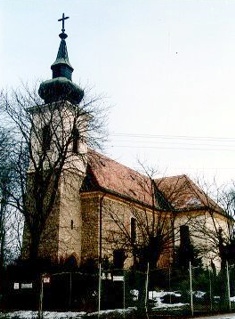
(3) The church in Cinkota
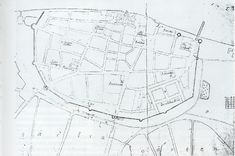
(4) Layout of Pest, 1743
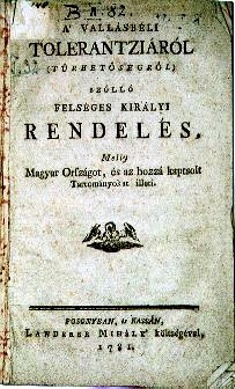 (5)
Hungarian Eedition of the
Edict of Tolerance
|
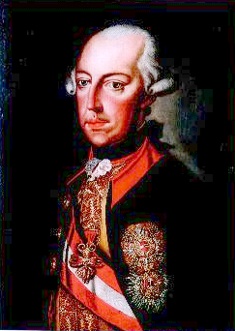
(6) Joseph II.
|
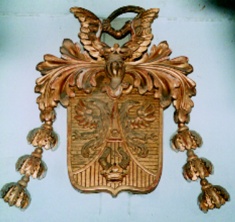
(7) Crest of Boldizsár Pongrácz
|
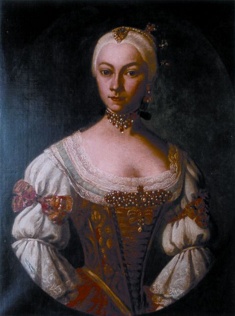
(8) Teleki Józsefné Johanna Roth
|
|
This freedom of religion, attributed to divine providence, cut free the followers of
Luther and Calvin
 from their bonds they suffered from for two and a half centuries. Even today you may see a portrait of or a memorial plaque dedicated to Joseph II
(6) in several Lutheran churches as a token of the gratitude of Protestant believers. As a result of this great spiritual spring some thousand congregations were established, and several hundreds of Protestant churches were built nation-wide after 1781. from their bonds they suffered from for two and a half centuries. Even today you may see a portrait of or a memorial plaque dedicated to Joseph II
(6) in several Lutheran churches as a token of the gratitude of Protestant believers. As a result of this great spiritual spring some thousand congregations were established, and several hundreds of Protestant churches were built nation-wide after 1781.
The situation however was much more complex in Pest and in Buda. Before 1781 there was not a single follower of the Lutheran faith among urban middle class citizens or property owners! It also took some time to certify one hundred Lutheran families to attain compliance with the provisions of the King’s Edict. Providence gathered families from the ranks of the high aristocracy and lesser nobility as well as some intellectuals, who played an active role in the scientific life in and around Pest to perform pioneering activities in order to establish the Lutheran Church in Hungary. It was indeed an act by Providence that the capital city of Hungary was surrounded in a semicircle by such Protestant families representing the high aristocracy as the Beleznay family in Pilis, the Podmaniczky family in Aszód, the Ráday family in Pécel, the Prónay family in Acsa, the Radvánszky family in Domony, the Teleki family in Szirák, and by families representing landed barons such as the Pongrácz and Földváry families from Péteri. The organisational activities for the establishment of the Lutheran Church were also supported by the fact that in those days Lutheran personalities could also occupy positions in the Metropolitan Council and at university departments at the University of Buda, which moved to the capital city from Pozsony. Such personalities were among others Frigyes Werthes from
Württenberg
 and professors Lajos Schedius, Márton Schwartner and Dániel Cornides. By the time the first Lutheran citizens could also join the board of town leadership, a brotherly congregation of aristocrats, representatives of the lesser nobility and common citizens gathered, which, through its co-operation, was able to formulate the "Insula Lutherana" and professors Lajos Schedius, Márton Schwartner and Dániel Cornides. By the time the first Lutheran citizens could also join the board of town leadership, a brotherly congregation of aristocrats, representatives of the lesser nobility and common citizens gathered, which, through its co-operation, was able to formulate the "Insula Lutherana"
 the first Lutheran congregation in the Catholic sea in the metropolitan area. the first Lutheran congregation in the Catholic sea in the metropolitan area.
After the proclamation of the Edict of Tolerance Boldizsár Pongrácz, a county official with
pietist  attitude and wide support by social groups, made the first step (7). He urged that public services already legal were conducted in his estate and in its vicinity. Using his respect as a patron he organised the pastoral and secular structure of his parish, and, following all this, he applied for a personal audience in King Joseph II’s Court. At the same time he composed a thanksgiving prayer, which he also read out in his parish church. He translated from German a pious book for his Slovakian subjects, and published his book in Pest entitled "On Finding the Greatest Treasure". attitude and wide support by social groups, made the first step (7). He urged that public services already legal were conducted in his estate and in its vicinity. Using his respect as a patron he organised the pastoral and secular structure of his parish, and, following all this, he applied for a personal audience in King Joseph II’s Court. At the same time he composed a thanksgiving prayer, which he also read out in his parish church. He translated from German a pious book for his Slovakian subjects, and published his book in Pest entitled "On Finding the Greatest Treasure".
Almost parallel with these steps it was possible for two Protestant families of high aristocracy to acquire real estates in the town of Pest. One such family was Count József Teleki’s, who were Calvinists. Together with his wife, Johanna Roth (8), who was Lutheran, the Count settled in the castle of Szirák (9), northeast of the capital. When they inherited a house in the centre of Pest (this building was unfortunately destroyed during World War II), the Teleki Palace
(10) served as a spiritual home for Lutheran families for several decades.
A manor house in the village of Pilis (11), east of Pest, was inherited by
Baron Anna Mária Podmaniczky (12), who was Lutheran, when she was widowed following the death of her husband, General Count Miklós Beleznay. She also owned the Grassalkovich Palace (13) in the centre of Pest (this palace was demolished in the last century), and she inherited the Podmaniczky-house (14) after the death of her father. For almost one and a half decades, until the death of Mrs. Beleznay in 1803, enthusiastic Lutherans gathered in these houses for sessions organising their congregation, and renowned writers, scientists and artists also visited these premises to take part in
literary sessions  . . |
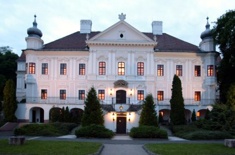
(9) Castle of Szirák 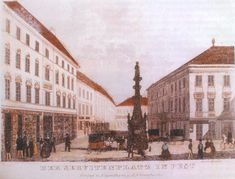
(10) Teleki Palece
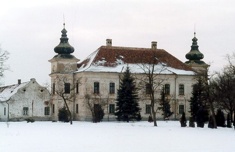
(11) Manor house in Pilis
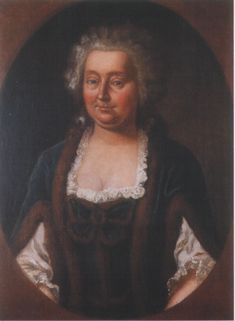
(12) Beleznay Miklósné Baron Anna Mária Podmaniczky
|
|
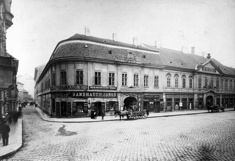
(14) Beleznay-Podmaniczky house
|
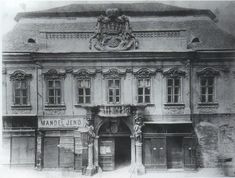
(13) Grassalkovich-Palace |
|